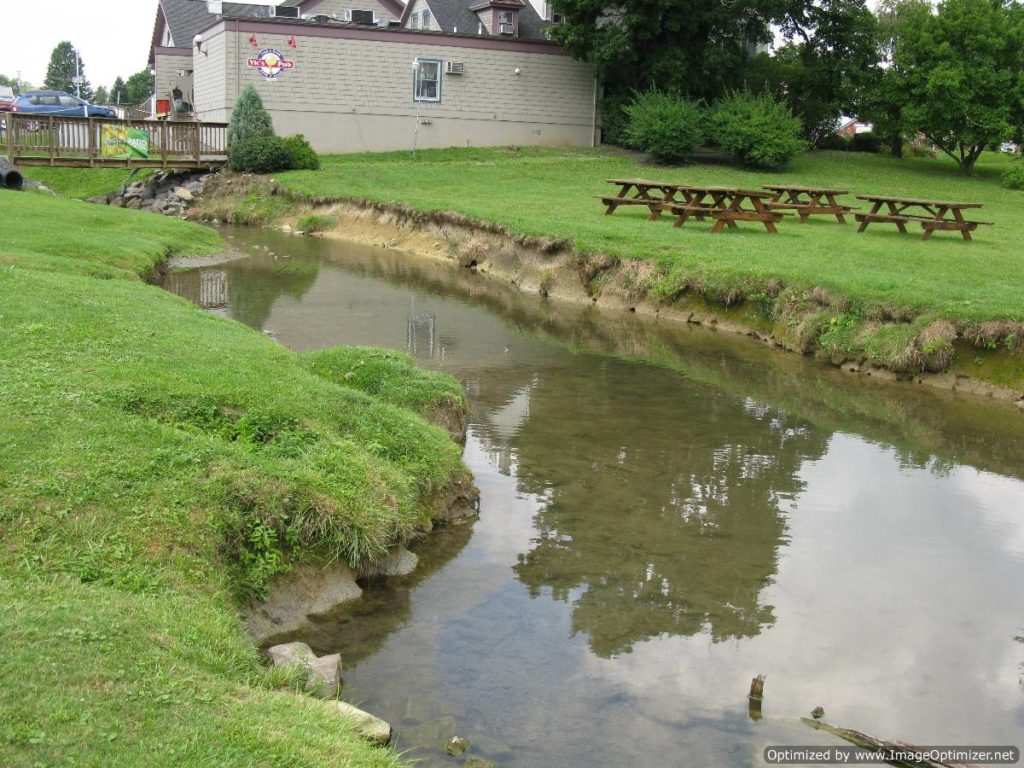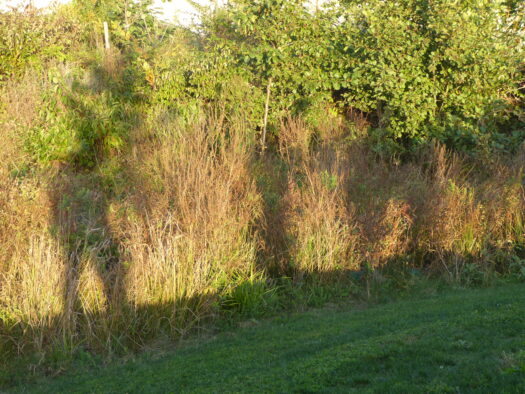 For the past two years, the River Town Team has organized tours of the newly created wetlands at the Penn House Commons development, adjacent to Giant grocery store. We are glad to be able to announce a follow up tour to be held just upstream from the earlier tours on Saturday morning, October 21, at 10am. We will meet at the pedestrian bridge across the creek in the Lewisburg Area Recreation Park at St Mary and 15th Streets. Once again Bucknell botany professor Chris Martine will be leading the tour, this time providing insight into the plants growing along the streambank in the park. Prof. Martine is something of a celebrity, being the central, non-plant figure in the web series "Plants Are Cool Too."
For the past two years, the River Town Team has organized tours of the newly created wetlands at the Penn House Commons development, adjacent to Giant grocery store. We are glad to be able to announce a follow up tour to be held just upstream from the earlier tours on Saturday morning, October 21, at 10am. We will meet at the pedestrian bridge across the creek in the Lewisburg Area Recreation Park at St Mary and 15th Streets. Once again Bucknell botany professor Chris Martine will be leading the tour, this time providing insight into the plants growing along the streambank in the park. Prof. Martine is something of a celebrity, being the central, non-plant figure in the web series "Plants Are Cool Too."
For this exploration closer to home than what's featured in the documentary shorts on youtube, in addition to the types of plants in the riparian buffer, we'll be looking at the Fish and Boat Commission-funded streambank stabilization project almost a decade after its installation. This means that the reality of the effort to establish a riparian buffer can be examined closely. How well did the originally specified plants take hold, what impact did the maintenance practices in the park have on the design, and what is the balance of native/non-native but contributing/invasive species now in evidence on the site?
Riparian buffers are a central tenet of conservation management best practices, defined as the establishment and maintenance of an area of permanent vegetation along water bodies that is left undisturbed (i.e. not mowed) to allow for natural succession of native vegetation. A riparian buffer may consist of grasses and forbs, or a combination of vegetation types to include grasses, forbs, shrubs and trees.
Benefits of Riparian Buffers
DEP’s Pennsylvania Stormwater Best Management Practices Manual states that “the economic, ecological, recreational, and aesthetic benefits of healthy and robust riparian buffers are well documented in scientific literature and numerous reports.” Specific examples include:
• Filtering pollution
• Preventing erosion and harmful sedimentation
• Reducing flooding
• Stabilizing stream banks
• Providing habitat for birds and other animals (which in turn boosts recreational opportunities and the economy)
• Regulating water temperature and
• Providing nutrients for vegetation (and in turn reducing nutrient loads in waterways)
 The Union County Conservation District and regional partners like the Northcentral PA Conservancy work together to implement a variety of best management practices throughout the county. Sometimes the projects succeed in restoring an area to its former familiar condition and in other cases, they result in a totally different "look." The pictures here show a project at the site of the former Vic's Pub. On the left is a before picture showing extensive bank erosion; on the right are post installation of various erosion and habitat measures. We'll also need to follow up with a shot of what it looks like once the seeded and staked vegetation comes in. Examples like this and those at the Penn House Commons site and the Lewisburg Area Recreation Park invite closer examination. Take a little time to explore them on foot this year.
The Union County Conservation District and regional partners like the Northcentral PA Conservancy work together to implement a variety of best management practices throughout the county. Sometimes the projects succeed in restoring an area to its former familiar condition and in other cases, they result in a totally different "look." The pictures here show a project at the site of the former Vic's Pub. On the left is a before picture showing extensive bank erosion; on the right are post installation of various erosion and habitat measures. We'll also need to follow up with a shot of what it looks like once the seeded and staked vegetation comes in. Examples like this and those at the Penn House Commons site and the Lewisburg Area Recreation Park invite closer examination. Take a little time to explore them on foot this year.


